Lean & Chemicals Toolkit: Chapter 3
Driving Out Chemical Waste with Lean Events
Value Stream Mapping Events

- Identify major sources of non-value added time in a value stream (depicted on a “current state” map);
- Envision a less wasteful future state (often shown on a “future state” map and/or an “ideal state” map); and
- Develop an implementation plan for future Lean activities, including kaizen events to improve specific processes in the value stream.

With some minor additions, value stream maps can become powerful tools for learning to see chemical wastes—how chemicals can affect time, quality, and cost. Two strategies for incorporating chemicals into value stream mapping are described below:
- Adding chemical metrics to value stream maps
- Examining key environmental inputs and outputs in value stream maps
See Chapter 3 of EPA’s Lean and Environment Toolkit for additional strategies for reducing environmental wastes using value stream mapping.
Add Chemical Metrics to Value Stream Maps
Although the most common metrics on value stream maps relate to time (e.g., cycle time, changeover time, value added time, and non-value added time), the data boxes in value stream maps can also record other key data for each process, such as environmental wastes and costs.
Add chemical waste information to process data boxes on the current state value stream map to analyze and record how much waste is generated at each process. For example, you could record the amount of hazardous waste generated by a process over a certain time period (e.g., per shift), or you could quantify the costs associated with those wastes. Be sure to include the cost of purchasing the raw materials, time spent managing the wastes, and disposal costs. Figure 4 shows process data boxes with environmental waste included (labeled “FO” for “fallout” wastes in this example). Figure 5 shows an example of a current state value stream map with chemical metrics included.
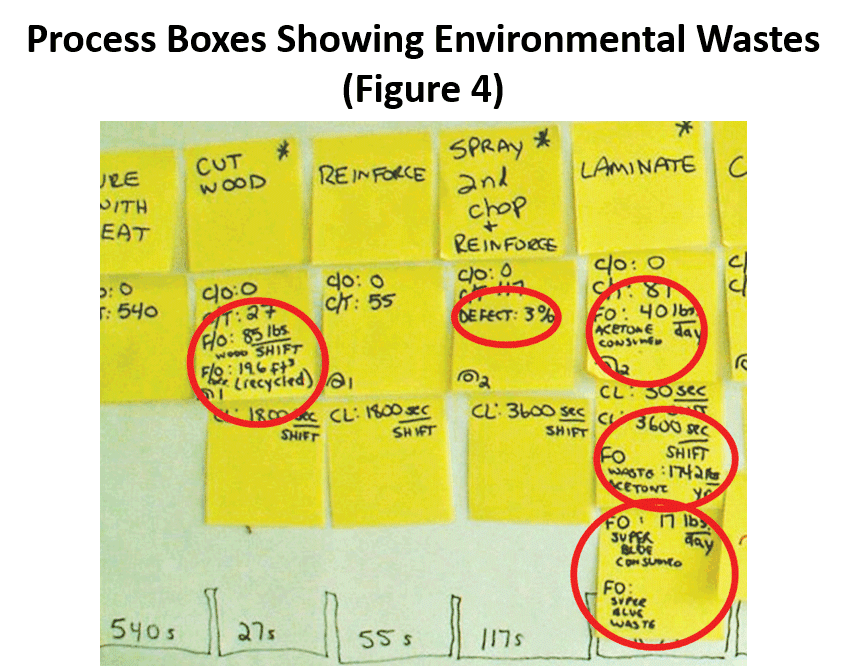
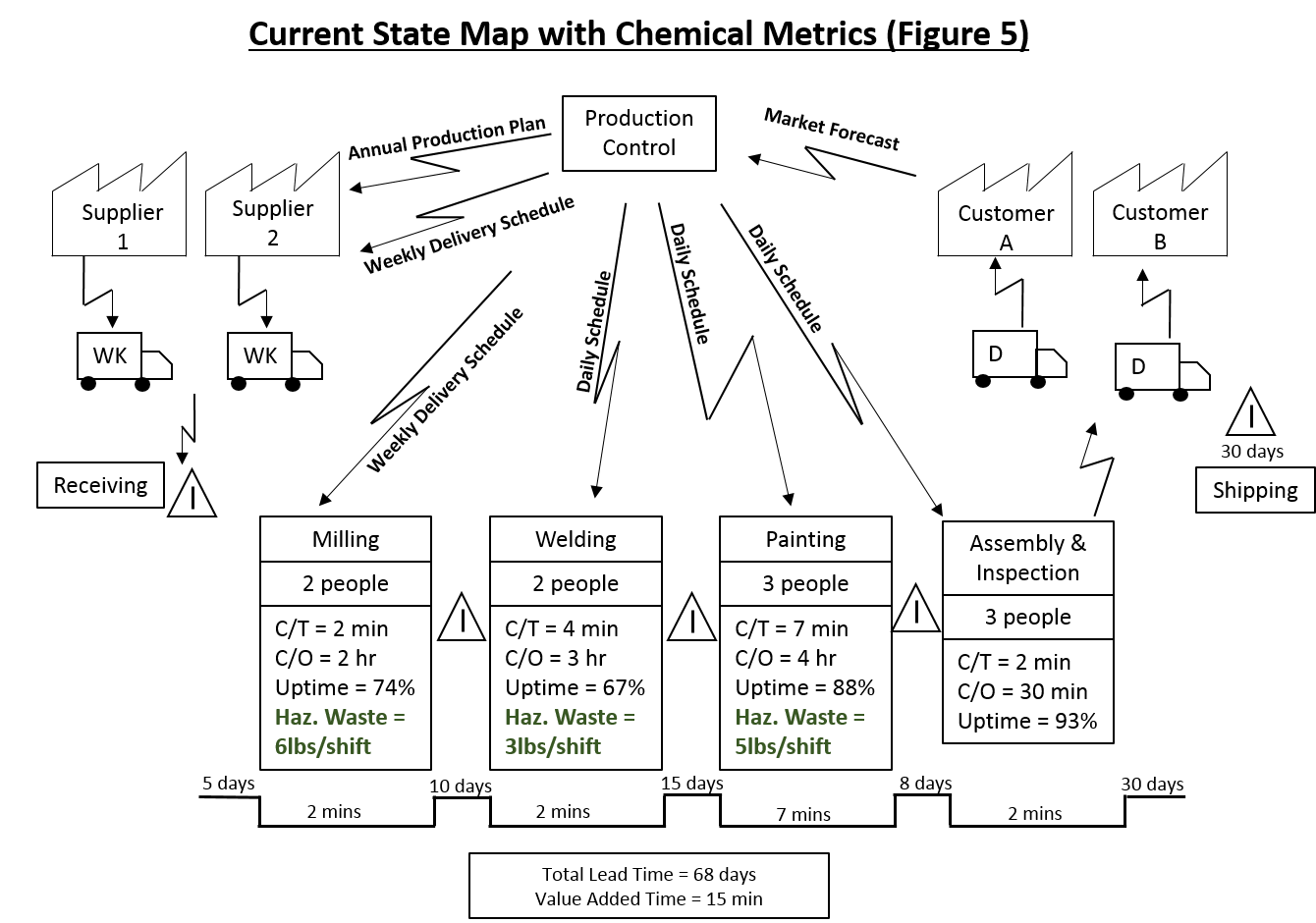

Chemical wastes can occur in many parts of the value stream. Too much chemical inventory could lead to expired or off-spec chemicals that require disposal. Excess use of chemicals beyond what adds value from the customer’s perspective and improper use of chemicals (e.g., incorrect mixing) in processes also result in waste. In the chemical manufacturing industry, key sources of waste include chemical reactors, separations, and other process equipment. For example, many chemical reactors require a lot of reactant feed and/or reaction conditions that are crucial to producing the product. Chemical reactors often require precise control of many inputs. If reactant feeds or operating conditions deviate from target values, the process yield may suffer or “off-spec” products may be produced, both of which will likely lead to increased waste.
Examine Key Environmental Inputs and Outputs in Value Stream Maps
Another way to examine environmental wastes in value stream mapping events is to record the key resource “inputs” to each process (e.g., raw materials, energy, and water use) and the key non-product “outputs” that result from each process (e.g., scrap, air emissions, hazardous

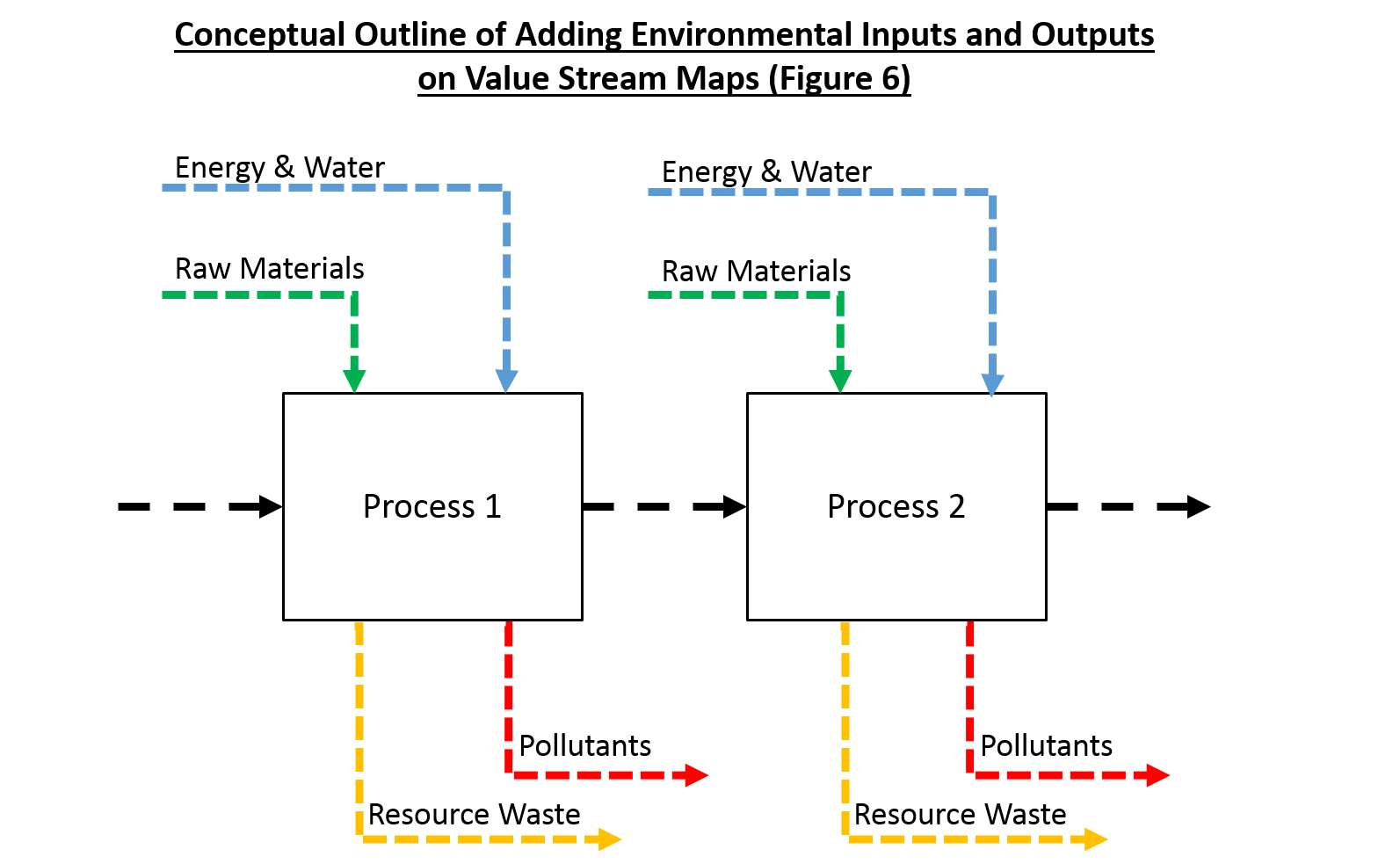
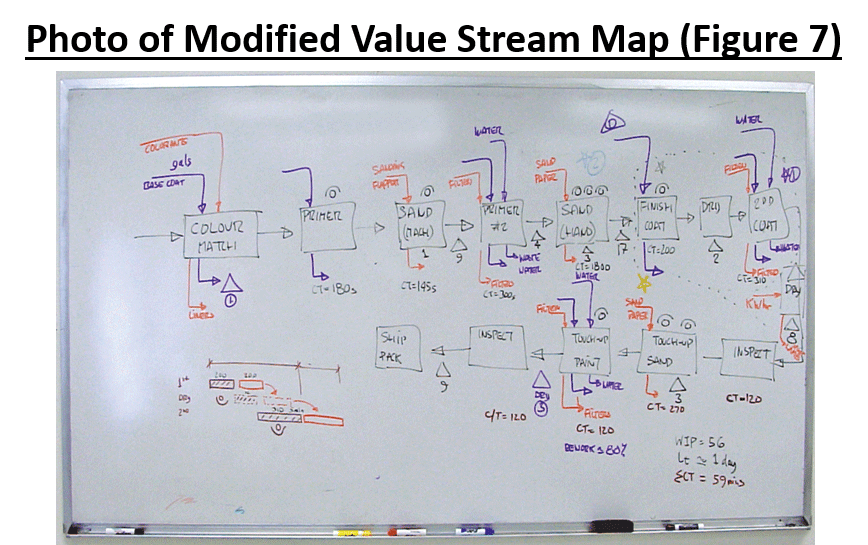
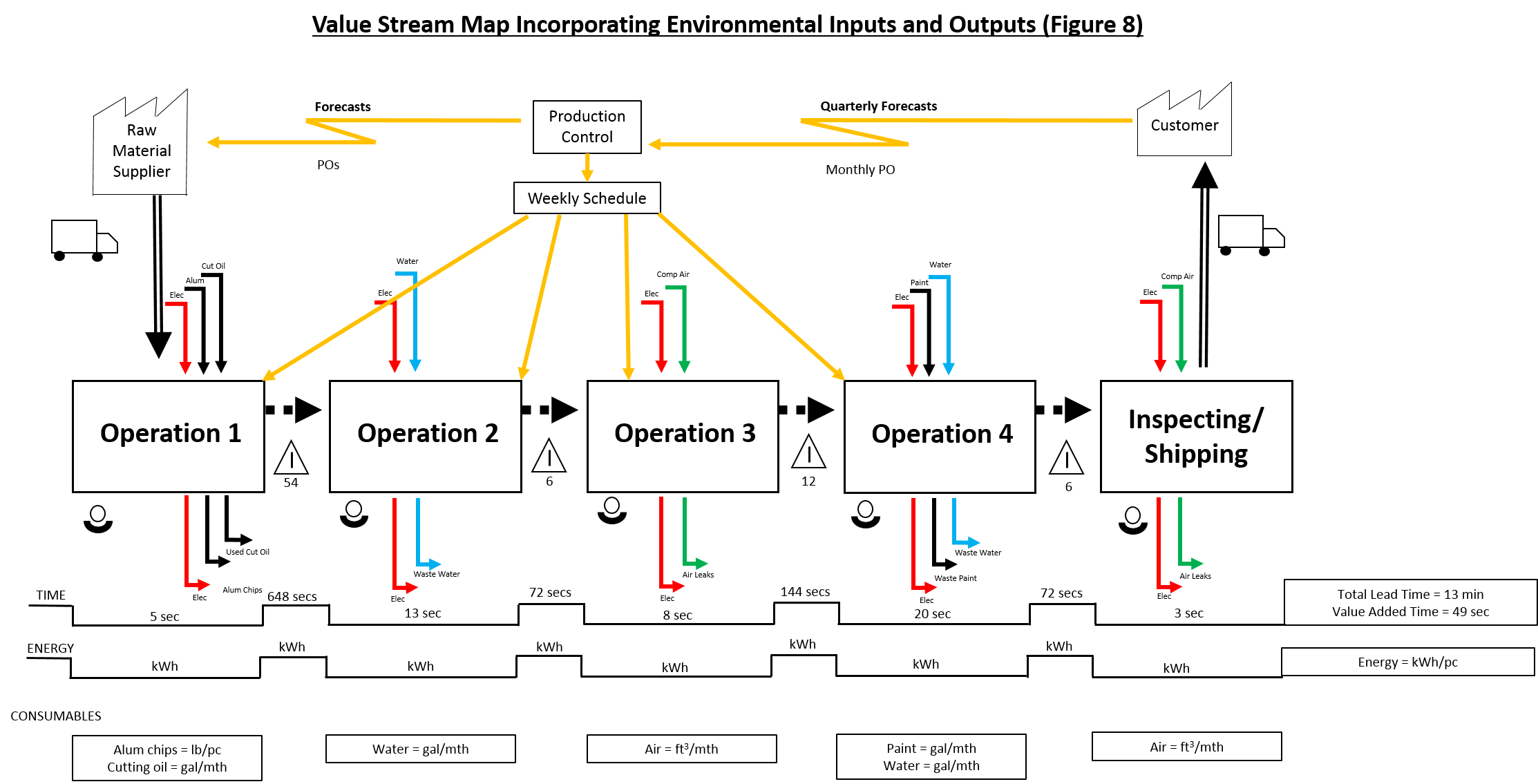
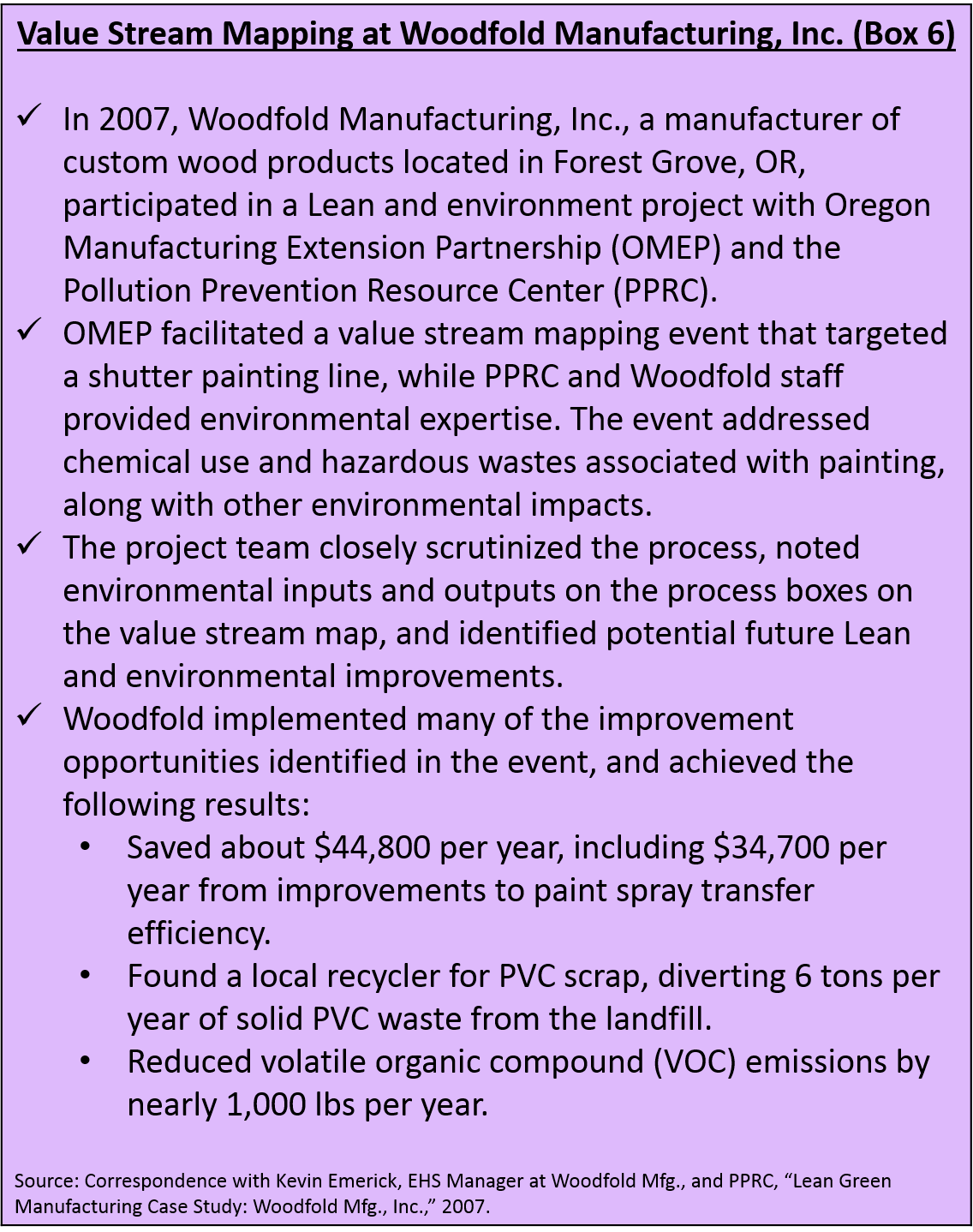
Kaizen Events

Know When to Seek Environmental Health and Safety Expertise in Kaizen Events
One of the most important ways to reduce chemical wastes and avoid potential regulatory issues is to involve staff with EHS expertise in planning for and conducting kaizen events on environmentally sensitive processes. In particular, if there’s someone at your organization who specializes in chemicals and hazardous waste management, consider inviting that person to participate in value stream mapping events or kaizen events targeting processes that deal with chemicals. Box 7 lists several processes with the potential for significant chemical wastes.
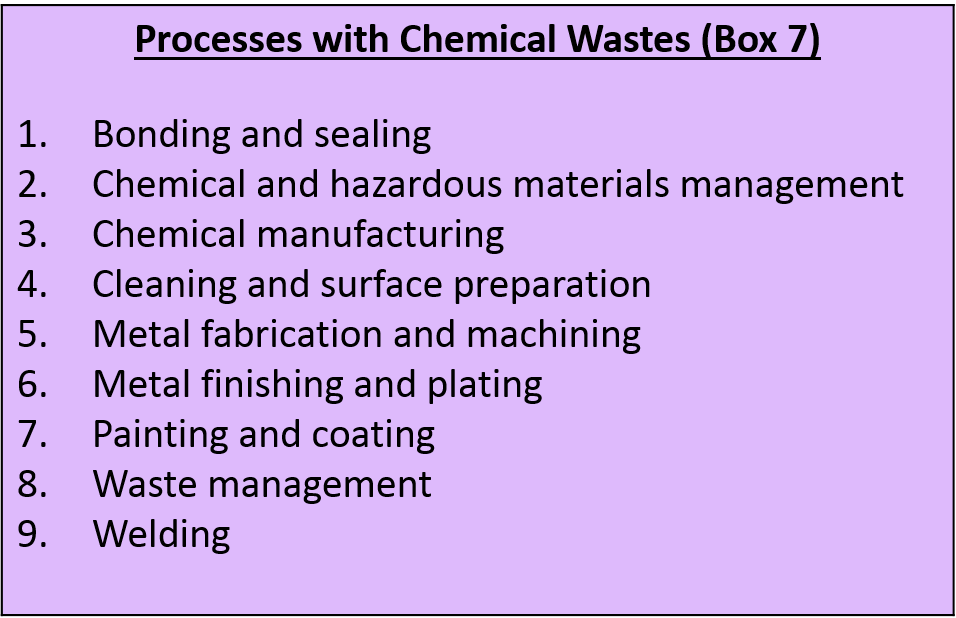

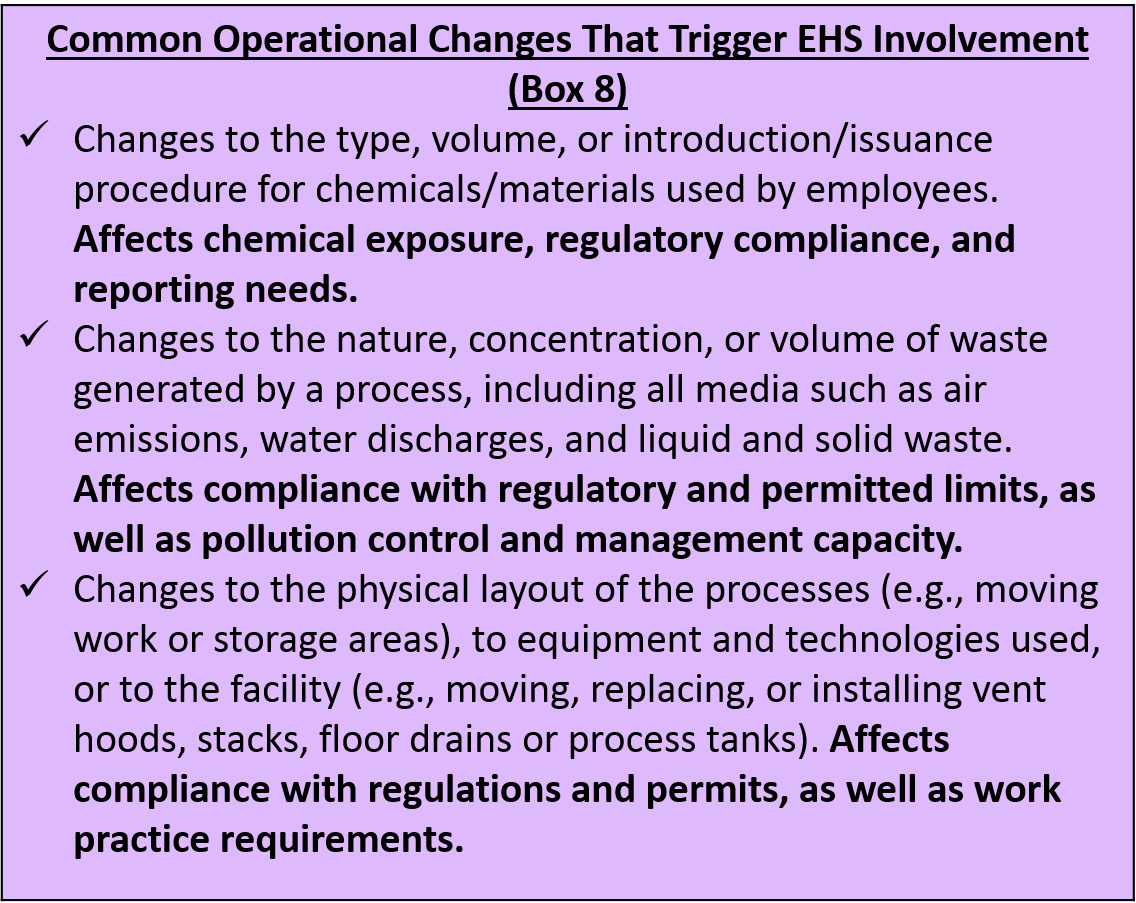
If not properly conducted, these types of operational changes could harm the health and safety of workers, or cause violations of EHS regulations. For example, moving hazardous waste collection areas from central locations to work cells could affect compliance with waste management regulations (e.g., Resource Conservation and Recovery Act regulations). Similarly, replacing existing air pollution control equipment with new right-sized equipment would require permit modifications under the Clean Air Act.

Identify Chemical Wastes in Kaizen Events



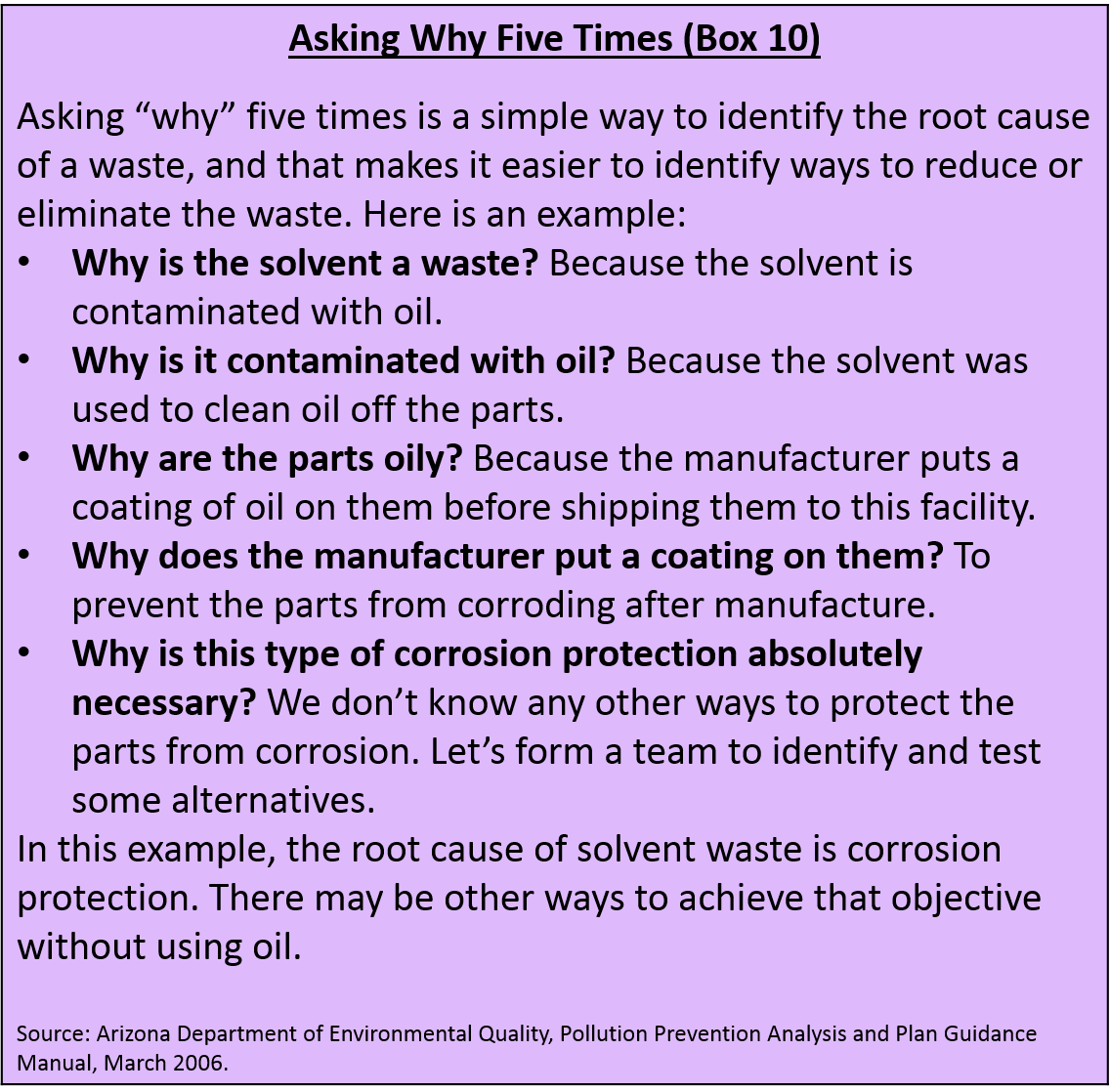
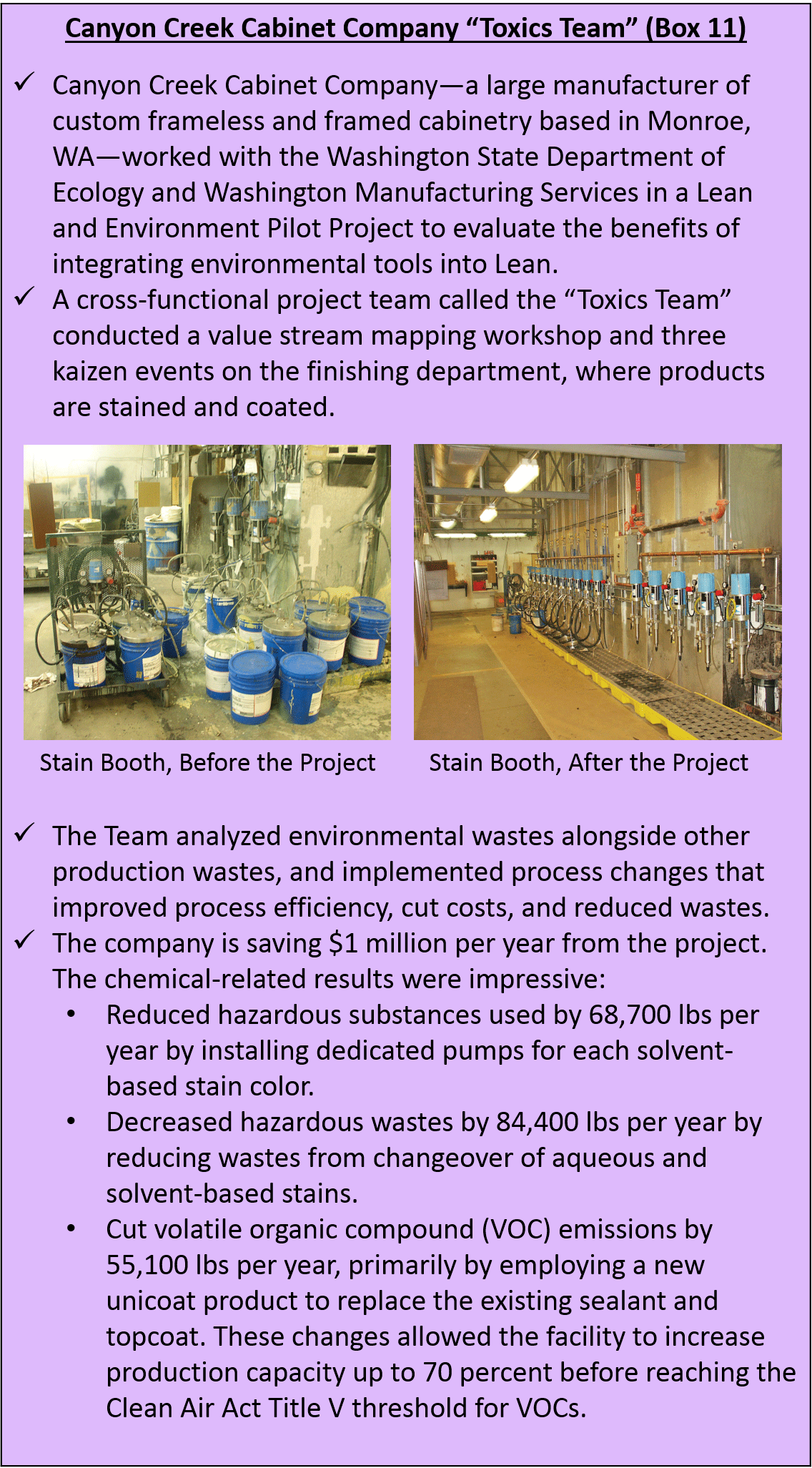
Conduct Chemical-Focused Kaizen Events

Footnotes
1 See Appendix A of EPA’s Lean and Environment Toolkit for more information about value stream mapping.
2 Ibid.
Toolkit Navigation
- Contents & Acknowledgements
- Executive Summary
- Preface
- Chapter 1: Introduction
- Chapter 2: Chemicals Overview
- Chapter 3: Driving Out Chemical Waste with Lean Events
- Chapter 4: Chemical Management in the Lean Organization
- Chapter 5: Managing Chemicals in Lean Workspaces
- Chapter 6: Lean Product and Process Design Methods
- Chapter 7: Conclusion
- Appendix A: Chemical Resources
- Appendix B: Material Safety Data Sheet Template Example
- Appendix C: Point-of-Use Storage Request Form Example
